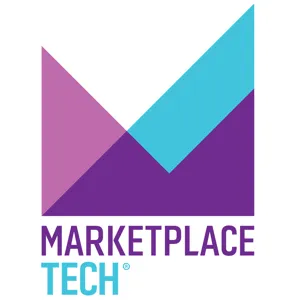Podcast Summary
The Cloud's Environmental Impact: The cloud, including data centers, fiber optic cables, undersea networks, satellites, and cellular towers, contributes about 2% to global greenhouse gas emissions
The cloud, which we often think of as a harmless and abstract place where our digital lives are stored, actually has a significant impact on the environment. These servers that run our data and applications consume a large amount of electricity, contributing to about 0.5% of all greenhouse gas emissions globally. However, when we consider everything that makes up the cloud, including data centers, fiber optic cables, undersea networks, satellites, and cellular towers, the carbon footprint rises to roughly 2%, which is equivalent to the airline industry. It's important to remember that the cloud is not a symbol of a world in balance, but rather a vast infrastructure with real environmental impacts.
Data Centers' Water Usage: A Growing Concern: Data centers consume vast amounts of water for cooling, with some using up to 100 million gallons per day. However, water usage in vulnerable watersheds raises concerns, and companies need to find sustainable cooling solutions and be transparent about their water consumption.
As data centers continue to expand, the need for effective cooling solutions has become increasingly important due to the significant amount of heat generated. Some companies are turning to water as a more energy-efficient alternative to traditional air conditioning. On average, a single data center can consume anywhere from 3 to 100 million gallons of water per day. However, there is a growing concern over the water usage in vulnerable watersheds, where 20% of US data centers are located. Communities in these areas have expressed concerns about both water use and carbon emissions. Google is making strides towards transparency, but many companies have kept their water usage a trade secret. With the water issue becoming more pressing, it's crucial for data centers to find sustainable cooling solutions and be transparent about their water usage.
Cloud data centers' water usage and its impact on farming communities: Cloud data centers require large amounts of water for cooling, potentially leading to competition with farmers and environmental issues. Their infrastructure is not sustainable in the long term, and their production and disposal also have environmental impacts.
The construction and operation of large cloud data centers pose significant environmental challenges, particularly in water-scarce areas where farming communities are already struggling. The data centers require vast amounts of water for cooling, leading to competition with farmers and potential drainage issues. Additionally, the cloud infrastructure itself is not sustainable in the long term, with servers needing to be replaced every few years and digital information having a limited lifespan. These issues contribute to the unsustainability of the cloud, which goes beyond just energy consumption and greenhouse gas emissions. Furthermore, the production and disposal of the materials used in data centers also have environmental impacts. Therefore, it's crucial to explore alternative solutions to large cloud data centers that minimize their environmental footprint.
Exploring Alternative, More Sustainable Solutions for Digital Activities: Amazon disputes high energy consumption estimates, but emerging tech like molecular-based storage and tissue encoding offer potential for more energy-efficient digital activities
While the cloud offers us remote computational power for advanced technologies like AI, its energy consumption is a growing concern. Companies like Amazon are expanding their data center footprint, leading to significant energy usage. However, there are emerging technologies on the horizon that could make digital activities more energy-efficient. These include molecular-based storage using synthetic DNA and information encoding into living tissues. Amazon disputes the energy consumption estimates, claiming that most of its electricity comes from renewable sources. This discussion underscores the importance of exploring alternative, more sustainable solutions for our digital activities. For more information, check out the links to the Insider article and Steven Gonzalez Monserrate's piece on Wired at marketplace tech dot org. Produced by Rosie Hughes, I'm Lily Jamali, and that's Marketplace Tech.
Learning about money through engaging podcast adventures for kids: Million Bazillion podcast teaches kids complex financial concepts in an accessible and entertaining way, covering topics like college accounts, unions, and Fort Knox's gold reserves.
The Million Bazillion podcast from Marketplace is an excellent educational resource for kids to understand complex financial concepts through engaging and entertaining adventures. The podcast tackles real-life questions from kids, making it relatable and accessible. Some of the topics covered include the function of college accounts, the role of unions, and the mystery behind Fort Knox's gold reserves. By listening to Million Bazillion, kids can gain valuable insights into how money works in the world, making it a must-listen for parents looking to help their kids navigate the confusing world of finance.





